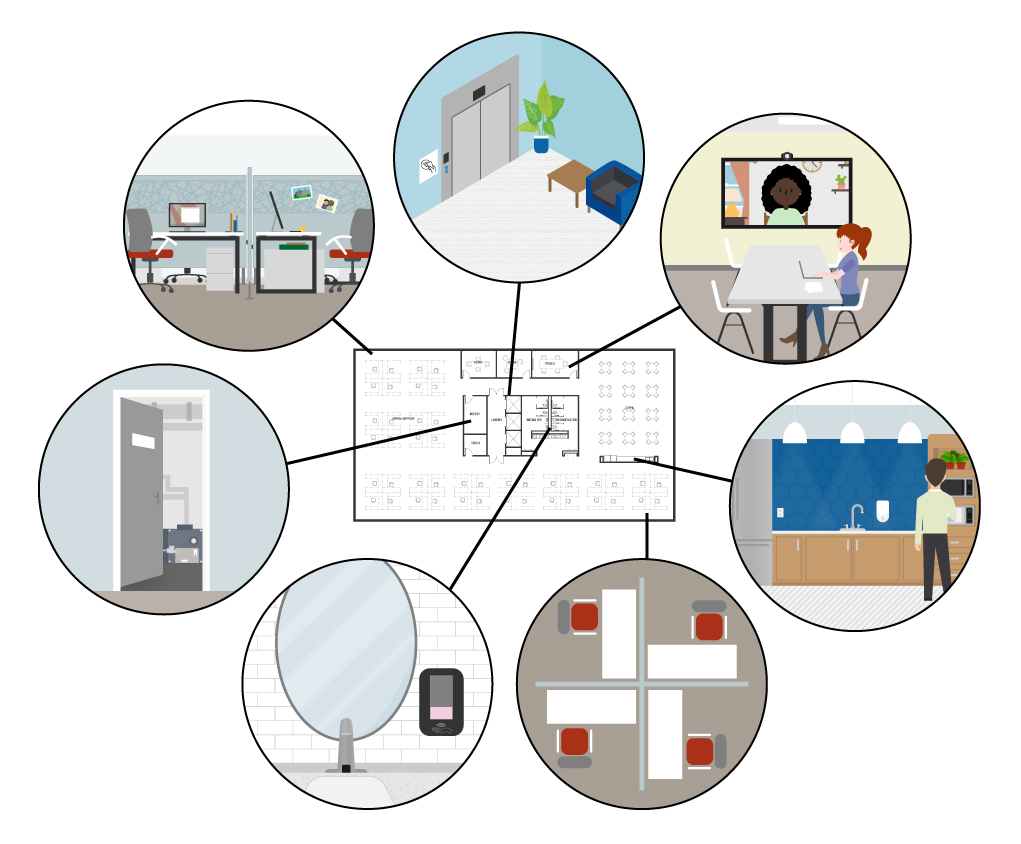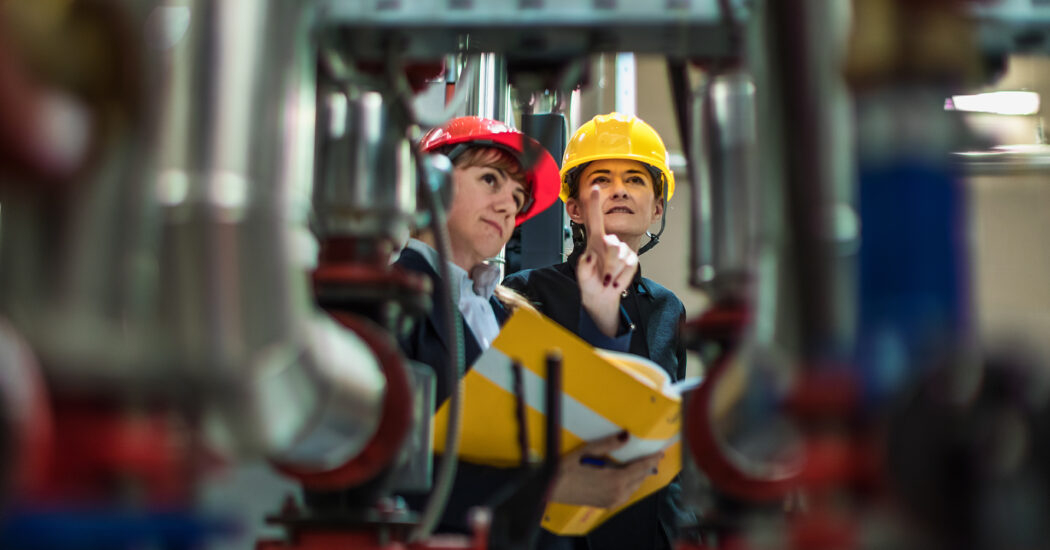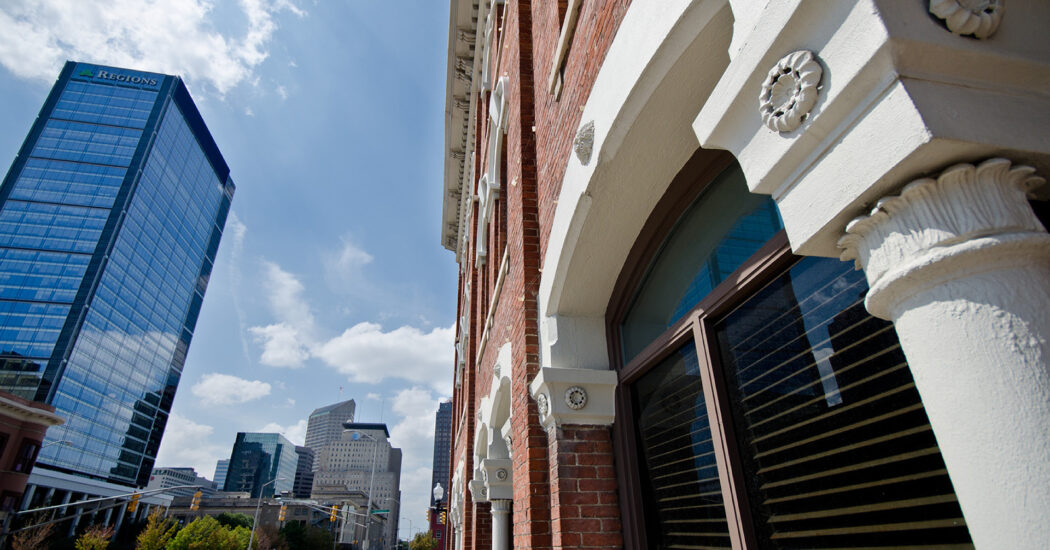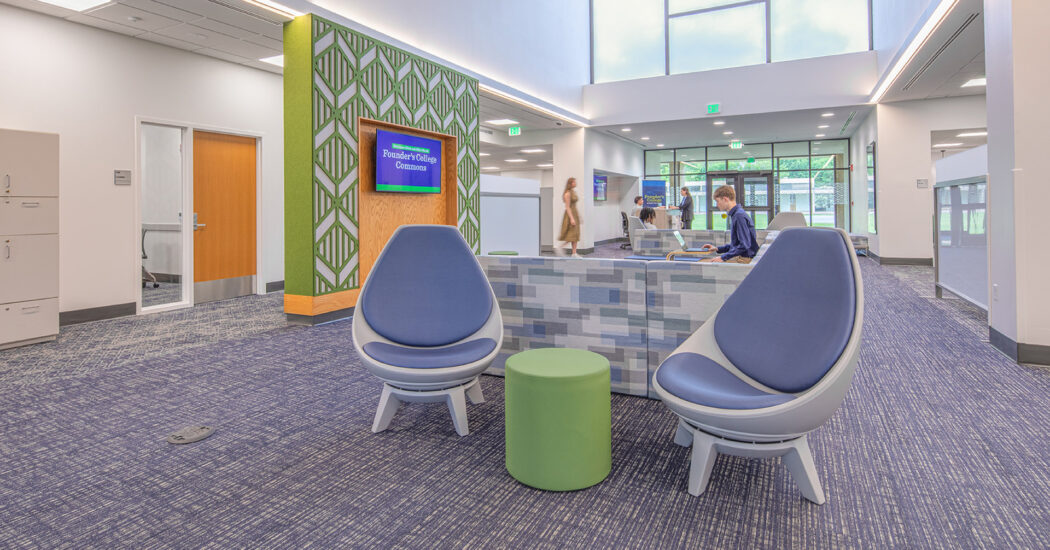What We Know About Office Design in the Wake of COVID-19
-
Category
Studio-Workplace, Innovation -
Posted By
Schmidt Associates -
Posted On
Jun 03, 2020

By Eddie Layton, Associate and Project Manager, and Dan Billings, Associate and Project Architect
The implications of COVID-19 and the impact it’s having on life and business is still in constant flux. We know things have to change, and there are lots of ideas floating around. We likely won’t have a firm grasp on what works, what doesn’t, and how best to move forward for some time.
We’re advising clients to make necessary adjustments now, but to avoid making drastic overhauls too early. As designers, we’re starting to unpack what the new state of the world means for us all as we go back to work. Here’s what we know now.
![]()
HVAC simply can’t be ignored.
COVID-19 and other pathogens can travel through the air and spread from person to person. This makes ventilation practices and indoor air quality important components of a healthy office environment.
This begins with an HVAC system designed for your facility. HVAC systems are not one-size fits all. A building’s specific uses, occupancy levels, and a host of other factors determine the type of system our engineers recommend, as well as the necessary building zones.
After you have the proper system, implementing certain HVAC strategies can further improve the health of your facility. Increasing the level of outdoor air being brought into the building and indoor air going out helps remove contaminants. We often recommend dedicated outdoor air systems (DOASs) to allow for greater outdoor air levels. Ultraviolet germicidal irradiation (UVGI) technology can also be added to air handling units to kill viruses and other contaminants as air circulates through the system. This is typically recommended for high-risk building zones, such as restrooms, waiting rooms, and clinics.
Routine maintenance is also crucial to keeping your HVAC system healthy. This includes regular filter changes and system inspections.
![]()
Almost everything will become touchless.
Everything from doors to elevators will likely become hands free in the future. Much of this technology already exists, but we expect to see a widespread implementation of touchless fixtures and tools throughout office buildings, schools, and other facilities.
This could mean:
- Building entrances controlled by swiping a keycard or fob
- Elevators controlled by swiping a keycard or fob or with the use of a mobile app
- Mobile apps (potentially coupled with occupancy sensors) that allow you to book a conference room or office space from your personal device, without touching a public booking display or walking up to or into a room to see if it’s available
- Voice control for conference room technology and other functions
- Motion-sensor fixtures, such as faucets and paper towel dispensers in restrooms and cafes or kitchens
![]()
New approaches will be taken to ensure effective handwashing.
By now, we all know the importance of handwashing to prevent the spread of COVID-19 and other illnesses. But we anticipate seeing new efforts in the workplace to promote handwashing and make it an easier, more enjoyable process.
For example, how many times have you stood and run the bathroom faucet until the water warmed up, finally giving up and washing with cold water? Not only is it an unpleasant experience, but it also tempts us to cut our handwashing short, making it less effective.
Instant, tankless hot water heaters can be installed on individual sinks to provide warm water immediately upon starting the faucet. There is an upfront investment to this approach. However, you can see significant energy cost savings compared to traditional water heaters, which are constantly keeping large amounts of water heated, versus only what is needed.
![]()
We need more elbow room.
Even when social distancing guidelines are loosened or lifted, it’s likely that the amount of space we’re comfortable having between us and the next person will increase. This means office layouts and standard operating procedures will change.
We won’t necessarily see a slew of walls going up in offices across America—and we don’t recommend that. But we will see modifications that balance employee health with the efficiencies that many organizations have gained with open-concept office floor plans.
These modifications may include:
- Alternating the direction of workstations to increase the radius of space around them
- Widening aisles between workstations, and widening hallways when possible
- Adding multiple doors to conference rooms to prevent bottlenecks
- Reducing seating in conference rooms and shared spaces to prevent crowding
- Implementing directional paths in aisles and hallways
![]()
Protective barriers will become commonplace.
Face masks have become the go-to method to prevent the spread of COVID-19. While many workplaces will require the use of masks when their staff returns to the office, this won’t last forever. But we do anticipate some form of protective barriers becoming common to prevent the spread of pathogens between employees. This could include barriers for reception personnel who are interacting with guests, as well as between individual employee workstations.
Keep in mind that barriers don’t have to mean visual separation. Transparent partitions provide protection while maintaining lines of sight. This allows you to keep that open feel—and the collaboration that often comes with it—as well as the productivity benefits of natural daylight filtering throughout the office.
![]()
New materials will surface in corporate settings.
The name of the game in a post-COVID world is frequent cleaning and sanitization. Soft, porous surfaces harbor germs and are harder to clean. We expect more swaps for solid-surface furnishings, like seating and flooring (i.e. less upholstery and carpeting), to simplify office cleaning practices.
Materials that were previously used primarily in healthcare environments will also become popular choices in office spaces and other types of facilities. Antimicrobial countertops and flooring help kill viruses and other pathogens, preventing them from living on the surface and spreading to others. These antimicrobial materials are good for reception areas, restrooms, kitchens/cafes, clinics, and other areas with a risk of cross-contamination.
Anodized faucets, door handles, and other metal fixtures and surfaces can also help create a cleaner, more hygienic environment. Anodization is a process that chemically changes a metal—such as aluminum or titanium—to make it more durable, non-corrosive, and scratch resistant. Anodization has also been shown to help reduce the ability of viruses and bacteria to cling to the surface.
![]()
Organizations must meet robust technological demands.
For some organizations, video conferencing was commonplace before a global pandemic made it the norm. Others hardly touched the stuff. Now, all organizations will need to evaluate their virtual collaboration capabilities—and all their technology tools—to allow for social distancing and remote work on a more permanent basis.
Some technology we expect to see:
- At least one conference room (if not all) in an office being outfitted with video and audio tools that allow for effective distance collaboration
- Technology that monitors building occupancy to help leadership, facilities staff, and employees make decisions based on number of people using spaces (i.e. identifying high-traffic areas to adjust office flow, cleaning frequency, etc.)
The Future of Your Office
Best practices in office design are shifting and will continue to evolve over the coming months and years. While there are many unanswered questions and unproven approaches regarding the physical workplace and COVID-19, you can keep your employees safe and productive with some common-sense adjustments.
Your office can be retrofitted for many of the changes we’ve discussed, and they don’t all need to happen at once. Some office adjustments—like increasing cleaning frequency, allowing space for social distancing, and providing hand and workspace sanitizing stations—can happen quickly, while you evaluate the longer-term changes you need to make for your organization.
If you need advice on improving your office space in the short or long term, we’re here to help. Contact us.







